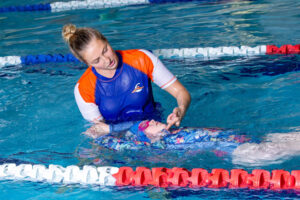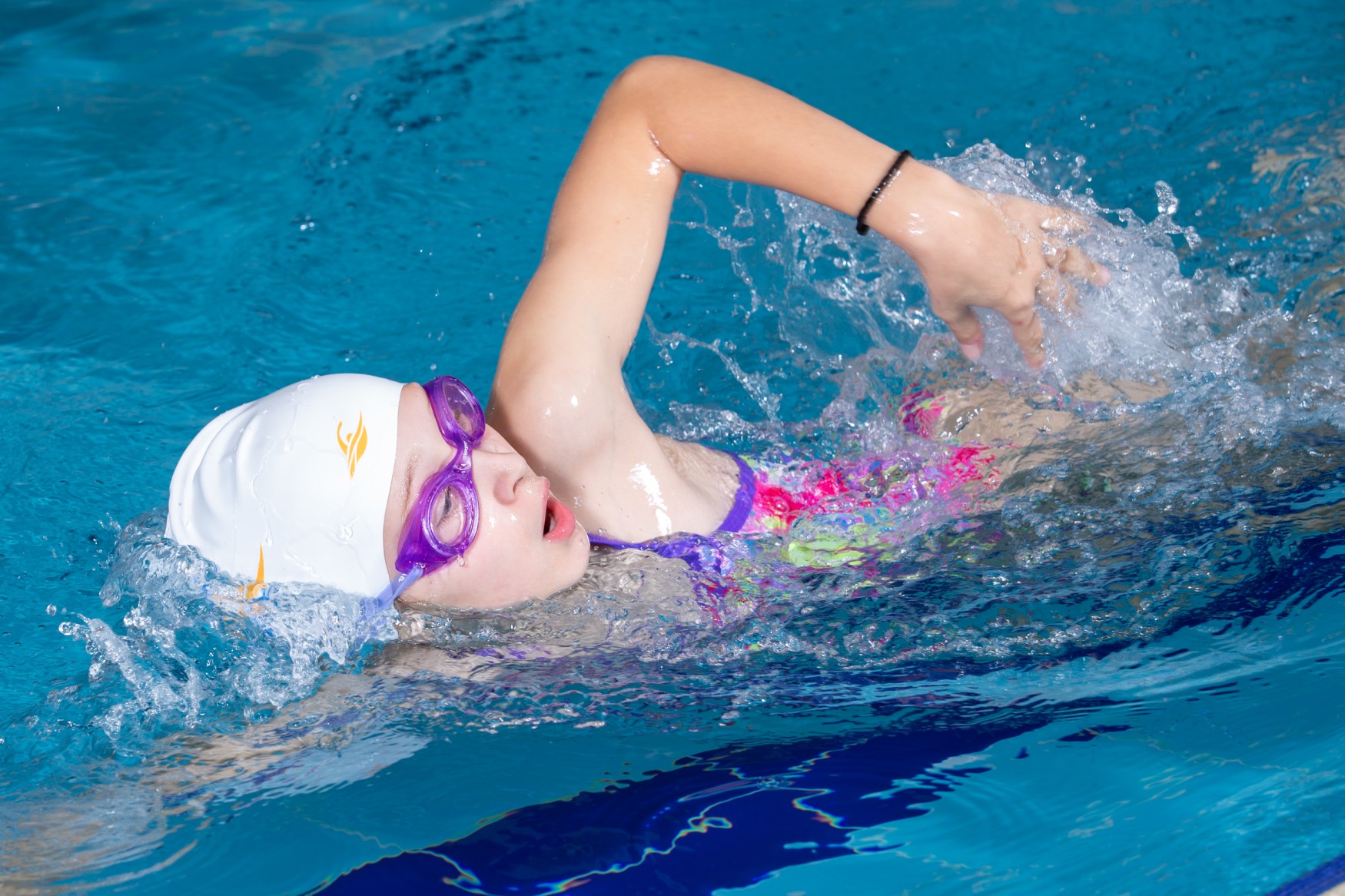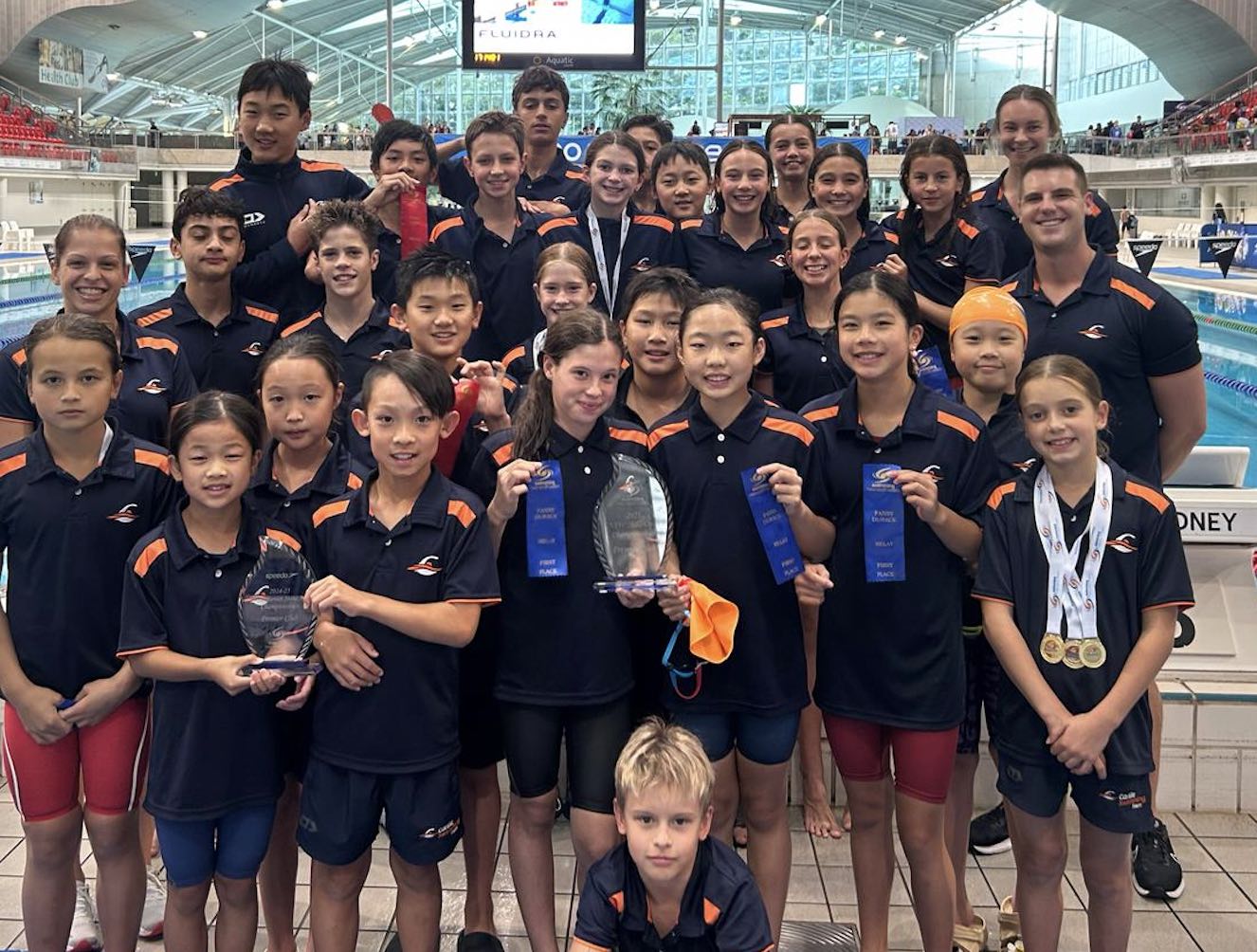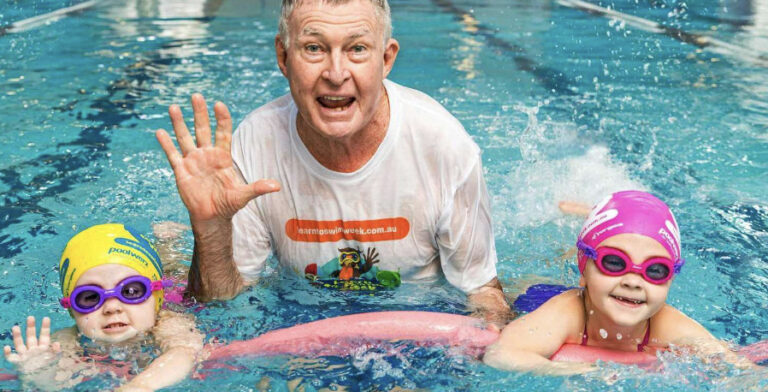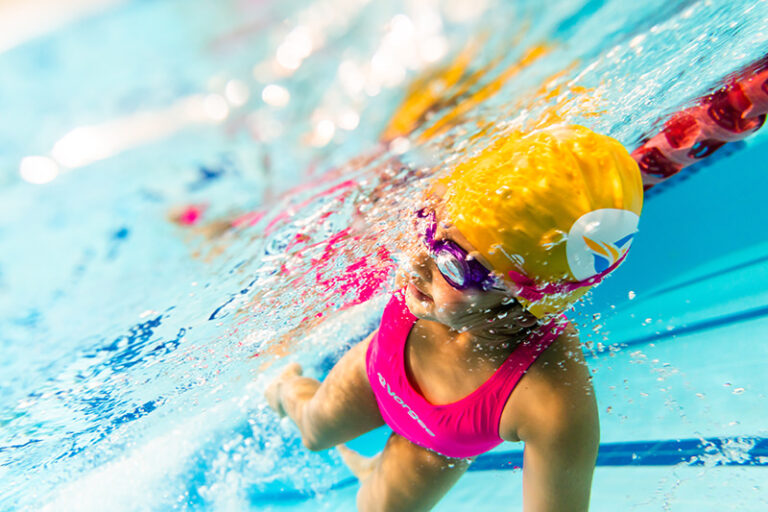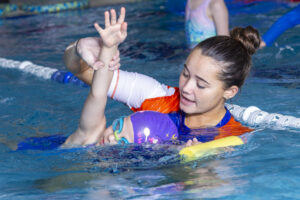
Carlile Swim School
When looking for a swimming school for your child, what are the absolute essentials the school should provide to help children grow to swim well and love the water?
Carlile Swimming is the oldest swimming school in Australia and based on more than 75 years of teaching swimming this is their view on the “must haves” for any swim school.
1 – An indoor pool with warm water and warm air.
The last thing you want is for your child to be shivering through their lessons. Children must be comfortable, otherwise every week you will have a battle to get them to swimming. Outdoor pools are not only open to the elements they often close in winter. Learning to swim is not a seasonal sport. Its a life skill and taking a break stalls progress.
2 – World class air handling.
Anyone who walked into an indoor pool in the early days will tell you of the fog of chlorine and how their eyes would often sting without even getting into the water. Fortunately, times have changed, but if you feel overwhelmed by the atmosphere inside the facility, then it won’t be pleasant for you or your child.
3 – Shallow water and ledges.
Children need to feel safe in order to learn confidently. The ideal pool will have ledges for little ones to explore from. Older children starting out need to be able to reach the bottom to feel safe.
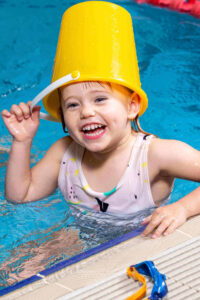
4 – No floaties
learning to swim with floatation aids gives children and parents a false sense of confidence. They also hold children in unnatural ways making learning the skills of swimming more difficult. The ideal swim school will only use active flotation aids such as noodles and kick boards, not permanent floatation devices attached to the children.
5 – A facility that doesn’t close in winter.
The last thing you want is for your child to be progressing and then having to take a three-month break during which they will forget what they have learnt.
6 – Learning with and without goggles.
The majority of children who drown do so after falling into water. Odds are they will not be wearing goggles. Learning to swim without them is an important safety skill. If they fall the last thing you want is them closing their eyes in panic. Other important skills include learning to float on their back, learning to return to the edge of the pool and happily exploring underwater. However no child is ever really “SAFE” in and around the water, an adult should always supervise. Find out more here
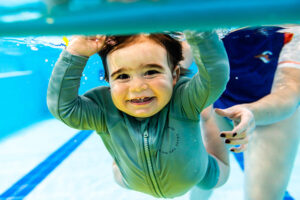
7– Caring, engaging teachers.
Look for a swimming school with teachers who clearly love what they do and engage the children. Happy kids, having fun are more likely to learn.
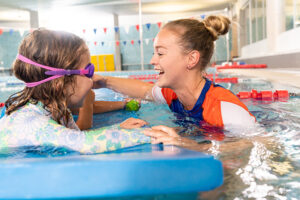
8 – A Program with clear progression.
Ask the staff about how children progress. Look for a program where each level builds the foundations for the next. The goal should be to create swimmers with great technique. Children should never advance to0 quickly. Ideally they will move to the next level when they can do so happily and confidently without struggling to learn the new skills. And please remember, technique saves lives because with an efficient stroke you can swim longer without tiring.
9 – A swim school with “spare” teachers and supervisors.
Look for a swimming school with supervisors on the pool deck always ensuring lesson quality and spare teachers floating between lanes to help as need. These spare teachers can help a child who is having difficulty or work with children trying to master new skills.
10 – Reputation. Ask your friends, read reviews.
While you can’t expect every parent to be an expert on learning to swim. They will know if their child enjoys their lessons and is progressing. Word of mouth counts.
If you are looking for great lessons for your child, contact Carlile Swimming here.

